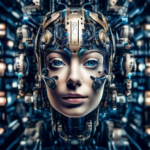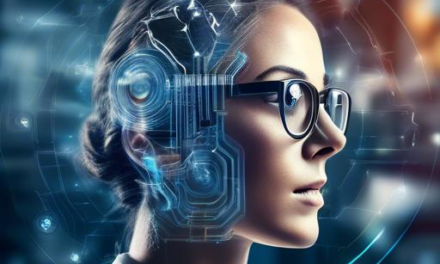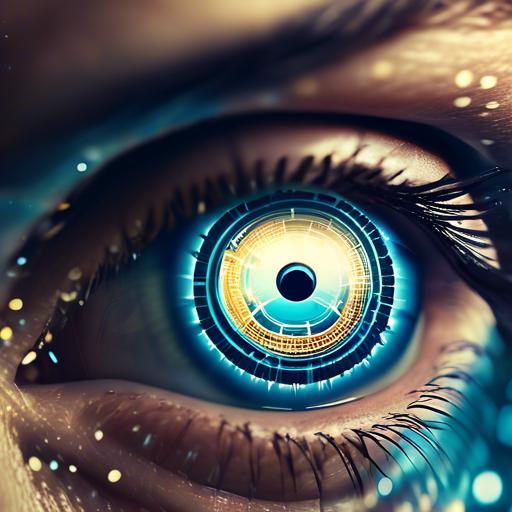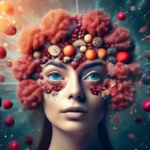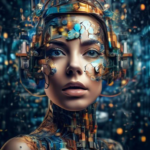In the shimmering digital bazaar of today’s internet, images are the golden trinkets that capture our attention and imagination. Yet, as the stock photo market burgeons with an unending tide of visual content, finding that perfect image among the millions can feel akin to hunting for a diamond in a vast desert of sand. This is where AI, the silent and diligent craftsman of our times, steps in to transform the chaos into a gallery of curated masterpieces. By harnessing the power of artificial intelligence, we stand on the precipice of a new era where the art of image curation is not just efficient, but extraordinarily intuitive. Let us embark on a journey to explore how these intelligent systems can revolutionize stock photo curation, making it a seamless experience that blends technology with creativity, and elevates the hunt for visual perfection into an effortless glide through artistry.
Table of Contents
- Harnessing Machine Learning to Identify High-Quality Visuals
- Streamlining Metadata Tagging with AI Precision
- Enhancing Diversity and Inclusivity in Stock Photos
- Optimizing Search and Discovery Through Intelligent Algorithms
- Automating Trends Analysis for Stock Photo Relevance
- Personalized User Experience with AI-Powered Recommendations
- Reducing Redundancy and Improving Curation Efficiency
- Ensuring Ethical Use of AI in Stock Photo Curation
- Closing Remarks
Harnessing Machine Learning to Identify High-Quality Visuals
When it comes to curating stock photos, the sheer volume of images available can leave one feeling overwhelmed. However, **machine learning (ML)** offers a potent solution by streamlining the selection process and ensuring the highest quality visuals rise to the top. But what makes an image high-quality? Factors such as composition, color balance, and contextual relevance play crucial roles, and ML models can be trained to understand these criteria at an almost human level.
One of the most transformative aspects of ML in this realm is its ability to learn from historical data. Imagine an algorithm that scans millions of user interactions with stock photos to identify patterns in preference. What do users typically like? What types of images are more likely to be downloaded? ML can use this data to spot trends and automatically prioritize new photos that fit these patterns, saving time and effort for both curators and end-users.
Here are some ways machine learning algorithms work their magic to identify high-quality visuals:
- **Image Recognition**: Automatically tagging and categorizing images based on content.
- **Aesthetic Quality Assessment**: Scoring images on factors like symmetry, sharpness, and color harmony.
- **Contextual Analysis**: Ensuring images are relevant to the searched keyword or theme.
For example, let’s look at some criteria ML algorithms might use to filter and rate stock photos:
| Criterion | Description |
|---|---|
| Color Balance | Measures the visual harmony of colors. |
| Sharpness | Ensures the image is clear and in focus. |
| Relevance | Checks if the image matches the search query context. |
| Composition | Assesses the arrangement of elements within the frame. |
By implementing these advanced ML techniques, stock photo platforms can significantly enhance user experience. Users are more likely to find images that exactly fit their needs, while photographers can benefit from seeing their high-quality images gain visibility. The end result is a more efficient, enjoyable, and fruitful image selection process for all.
Streamlining Metadata Tagging with AI Precision
Metadata tagging has long been a cornerstone of effective stock photo curation. However, manual tagging can be time-consuming, inconsistent, and often prone to human error. Enter artificial intelligence, a revolutionizing force that is enhancing the precision and efficiency of metadata tagging like never before.
One of the standout benefits of AI-powered metadata tagging is its ability to recognize intricate details and patterns within images that might be overlooked by the human eye. **Machine learning algorithms** can be trained to identify various elements such as emotion, setting, and even brand logos within a photo, ensuring a comprehensive and accurate tagging process. This not only saves time but also enhances the searchability of stock photos, making it easier for users to find exactly what they’re looking for.
Consider the following advantages of AI in metadata tagging:
- **Consistency**: AI ensures uniformity in tagging, eliminating the subjective nature of manual input.
- **Speed**: Automated systems process images at a speed far surpassing human capability, allowing for real-time updates.
- **Scalability**: From small photo libraries to vast collections, AI scales effortlessly to meet the demand.
A practical example can be seen in the differentiation between similar themes. For instance, a manual process might generically tag images of people as simply “people,” whereas AI can add much-needed nuance. Here’s how it works:
| Tag | Manual Tagging | AI Tagging |
|---|---|---|
| Emotion | Happy | Ecstatic, Joyful, Gleeful |
| Setting | City | Urban Park, Downtown, Skyline |
| Activity | Running | Jogging, Sprinting, Marathon |
**AI’s ability to offer this level of detail** provides a richer and more user-friendly experience. Stock photo agencies utilizing these technologies can ensure their libraries are not just expansively tagged but also contextually rich, promising users a remarkably intuitive search experience.
Enhancing Diversity and Inclusivity in Stock Photos
Artificial Intelligence has the power to revolutionize the way we curate stock photos, especially when it comes to enhancing diversity and inclusivity. At present, finding inclusive and diverse imagery often feels like searching for a needle in a haystack. Here, AI steps in as a game-changer by utilizing advanced algorithms to sift through vast databases effectively.
How exactly can AI make a difference? Consider the following ways:
- Automated Tagging: With AI, stock photo platforms can automatically generate tags that represent various ethnicities, body types, ages, and abilities. This means more accurate and diverse search results.
- Facial Recognition Improvements: Advanced AI can analyze facial features to better represent a variety of facial structures and skin tones, thus ensuring all communities are represented.
- Content Analysis: AI can examine the context in which subjects are portrayed, ensuring they are depicted in empowering and non-stereotypical roles.
Moreover, AI can go beyond just identifying diverse elements. It can help in creating tables and datasets that ensure ongoing inclusivity. Here is an example of how a table might look:
| Feature | Benefit |
|---|---|
| Multilingual Tagging | Ensures global representation and ease of access |
| Contextual Search Improvements | Data-driven insights for better photo relevance |
| Bias Detection | Proactively identifies and mitigates stereotypes |
By leveraging AI, the curation process becomes more intuitive and attuned to the needs of a diverse audience. This kind of smart curation not only saves time but also enriches the creative resources available to marketers, designers, and content creators, paving the way for more authentic and relatable visual storytelling.
Optimizing Search and Discovery Through Intelligent Algorithms
Stock photo libraries are brimming with vast collections of images, making pinpointing the perfect picture an overwhelming task. **Intelligent algorithms** come to our aid here, enabling more effective search and discovery processes. By tapping into AI-driven technology, stock photo platforms can significantly enhance user experience.
Key AI technologies include:
- Image Recognition: Advanced algorithms can now analyze and categorize photos based on their content, such as color schemes, objects, and even moods.
- Natural Language Processing (NLP): This allows for more accurate associations between search terms and image contents, bridging the gap between human language and visual data.
- Recommendation Systems: AI can predict and suggest images that suit a user’s past behavior and preferences.
Imagine searching for photos of “sunset over mountains.” Traditional search methods may retrieve irrelevant results, but an AI-enabled search leverages deep learning to understand the nuances, providing more precise and contextually relevant images. This saves time and improves user satisfaction.
| Feature | Benefit |
|---|---|
| Enhanced Search | Find the perfect photo faster |
| Personalized Suggestions | Discover images tailored to your preferences |
| Contextual Relevance | More accurate search results |
Moreover, AI can help organize and curate image collections by auto-tagging and classifying visual content. This makes it easier for users to browse categories and stumble upon exactly what they need, even if they didn’t know what they were looking for. Stock photo websites employing AI not only become repositories of stunning visuals but also allies in creative exploration.
Automating Trends Analysis for Stock Photo Relevance
In an era where visuals play a key role in digital communication, ensuring the relevance of stock photos is crucial. Traditional methods of curating stock photo collections can be laborious and time-consuming. However, with advancements in AI, automating trends analysis has become a game changer for enhancing the relevance of stock images.
**Artificial Intelligence** can analyze vast amounts of data swiftly, identifying emerging trends that human eyes might miss. By leveraging AI, companies can stay ahead of the curve, offering images that align with current aesthetics and cultural shifts. Machine learning algorithms, in particular, are adept at spotting patterns within large datasets, making them invaluable for trend analysis. The benefits of this include:
- **Enhanced Discoverability**: Optimized tagging and categorization based on current trends.
- **User Satisfaction**: More relevant search results for photographers and designers.
- **Time Efficiency**: Reduced manual effort in analyzing and updating stock collections.
By implementing machine learning models, organizations can develop a system that learns from historical data, predicting which types of images are likely to become popular. For instance, trends in technology, fashion, or even landscape preferences can be dynamically monitored and updated. Here’s a snapshot of how AI helps in breaking down these trends:
| Trend Category | AI-Curated Insights |
|---|---|
| Technology | High demand for images portraying AI, VR, and blockchain. |
| Fashion | Shift towards sustainable and minimalistic styles. |
| Nature | Increased interest in images of untouched landscapes and wildlife. |
Another critical aspect is the ability to adjust to seasonal variations and global events. AI algorithms can instantly adapt to current events, such as holidays, elections, or global crises, ensuring that stock collections remain timely and relevant. For instance, the rise in remote work environments has driven the demand for images depicting home offices and virtual collaboration, which AI tools can quickly identify and curate.
Ultimately, integrating AI into the curation process transforms how stock photo companies operate, providing a more efficient and user-centric approach. Not only does it enhance the relevancy of the images offered, but it also supports photographers by spotlighting the types of content that are currently in demand. This symbiotic relationship benefits all parties involved, making AI an indispensable tool in the ever-evolving world of stock photography.
Personalized User Experience with AI-Powered Recommendations
In today’s digital age, the integration of artificial intelligence (AI) has revolutionized the way content is curated, especially in the realm of stock photos. By analyzing a user’s past behavior, preferences, and search patterns, AI can generate recommendations that are not only accurate but highly personalized, ensuring users find exactly what they need with minimal effort.
Consider the advantages of an AI-powered recommendation system for stock photos:
- Enhanced Relevance: AI algorithms can scrutinize your search history, frequently used keywords, and even the types of images you’ve previously downloaded. By doing so, it curates a collection that’s tailored to your specific needs.
- Time Efficiency: Instead of sifting through thousands of irrelevant images, users can quickly access a refined list, saving valuable time which can be better spent on creative tasks.
- Dynamic Adaptation: The more you interact with the platform, the smarter the AI becomes. It continually learns and adapts to your changing preferences, ensuring the recommendations remain as relevant as possible.
To illustrate this, let’s compare a traditional search system with an AI-powered recommendation system:
| Traditional Search | AI-Powered Recommendations |
|---|---|
| General search results | Tailored image suggestions |
| Extensive browsing required | Minimal browsing needed |
| One-size-fits-all | Personalized content |
Moreover, AI isn’t limited to just understanding direct inputs. It can also interpret visual elements and contexts within images. For instance, if a user frequently selects photos with a modern and minimalistic style, the AI will prioritize such images in future recommendations.
In essence, AI-powered recommendations foster a seamless and enriched user experience. Not only do they make the process of finding the perfect stock images more intuitive, but they also ensure that the content aligns perfectly with the user’s creative vision and project needs.
Reducing Redundancy and Improving Curation Efficiency
One of the major challenges in stock photo curation is dealing with redundancy. With millions of images uploaded daily, it’s no surprise that many photos capture similar subjects, angles, and compositions, making it difficult for curators to sift through the noise. **Artificial Intelligence (AI)** can play a pivotal role here by analyzing metadata, visual elements, and even user engagement metrics to identify and eliminate redundant images. By doing so, AI can significantly streamline the curation process, saving curators countless hours and allowing them to focus on more subjective decisions that require human judgment.
Beyond reducing redundancy, AI can improve curation efficiency through **smart categorization**. Traditional keyword tagging is often manual and error-prone. AI tools can automatically sort photos into categories by recognizing objects, settings, and even emotions depicted in the images. This not only ensures a higher degree of accuracy but also makes it easier for users to discover exactly what they’re searching for.
- Image Recognition: AI uses deep learning to understand visual content.
- Metadata Analysis: Evaluates image titles, descriptions, and tags.
- User Engagement Data: Assesses how users interact with images (likes, shares, downloads).
| Traditional Curation | AI-Powered Curation |
|---|---|
| Manual tagging | Automated categorization |
| High redundancy | Reduced duplication |
| Time-consuming | Efficient processing |
Furthermore, AI can assist in identifying trends by analyzing large data sets to uncover which types of images resonate most with audiences. This can be particularly useful for stock photo libraries aiming to stay on top of visual trends and continuously update their collections with relevant and high-demand images. It’s a win-win, as users get access to fresher, trendier content, and libraries optimize their inventory based on concrete data rather than guesswork.
In essence, integrating AI into stock photo curation not only minimizes redundancy but also **elevates the overall user experience**. By automating repetitive tasks and providing insights into user preferences, AI frees up curators to add a more personal, human touch to the selection process. This balance of technology and human expertise can help create a more cohesive, efficient, and appealing stock photo library for everyone involved.
Ensuring Ethical Use of AI in Stock Photo Curation
As AI rapidly advances, its integration into stock photo curation poses both promising opportunities and significant ethical considerations. Nurturing an ethical approach ensures that AI tools align with human values, promoting fairness, diversity, and transparency.
**Transparency** in AI algorithms is crucial. The stock photo industry must champion openness regarding how AI models work, allowing for easier identification and mitigation of biases. To achieve this, curators can publish **algorithm transparency reports**:
- Details on data sources and datasets used
- Insight into the training process
- Explanation of decision-making algorithms
**Diversity** should be a cornerstone of ethical AI usage. AI systems must recognize and include a broad spectrum of human experience, ensuring representation across cultures, genders, and demographics. This approach prevents the marginalization of underrepresented groups, making stock photo repositories richer and more inclusive.
To align AI with ethical standards, it’s essential to conduct regular **bias audits**. These audits can identify biased patterns or imbalances and help correct them. For example, if an AI system disproportionately displays images of a particular demographic, it can be adjusted to provide more balanced results. Below is a table illustrating a simplified bias audit example:
| Category | Audit Results | Recommendations |
|---|---|---|
| Gender Representation | 70% Male, 30% Female | Increase female image data by 40% |
| Cultural Diversity | Predominantly Western | Include more Asian, African, and Latino imagery |
Lastly, fostering a **feedback loop** with users provides invaluable insight. By allowing photographers and consumers to report issues and suggest improvements, the curation process becomes more aligned with community needs. This participatory approach ensures AI systems evolve in ethically grounded and user-focused ways.
Closing Remarks
With the power of AI, the future of stock photo curation is looking brighter than ever. By leveraging machine learning and advanced algorithms, we can revolutionize the way we discover and curate images. From saving time and improving efficiency to enhancing the overall quality of our collections, the possibilities are endless. So, let’s embrace this exciting new era of technology and unlock the full potential of stock photography with AI by our side. The future is bright, and the possibilities are limitless. Let’s dive in and see where this incredible journey takes us!


